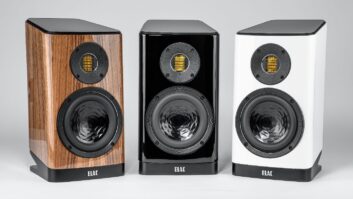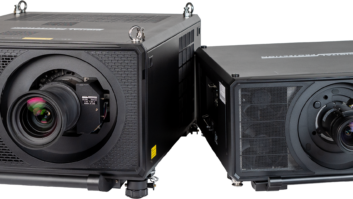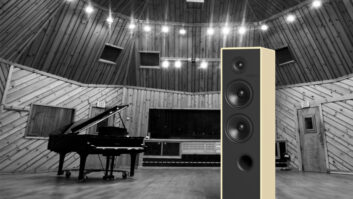There can be no doubt about it. The high-definition frontier has arrived: HD DVD is here, and Blu-Ray Disc is just around the corner. For years we have wished for high definition on a five-inch optical disc, and finally our wish has been granted…twice, in fact. Let the format war begin!
Regardless of which format eventually prevails, you can benefit right now by installing one or both in your clients systems. However, make sure that you install them correctly, or youll end up losing your profit on service calls when clients complain. HD DVD is not without its growing pains. Audio and video integration issues abound, but take heart. Its easy to understand the basics and avoid the pitfalls that early supporters have already uncovered.
Aside from its usual HDCP handshake issues, HDMI is doing an admirable job with HD DVD. If you have mastered the implementation of HDMI in your installations, you should be able to get a glorious image from an HD DVD player in no time at all. The same quality image is currently available from players component video outputs because movie studios have graciously released their initial HD DVD titles without the Image Constraint Token (ICT) flag, which forces players to downscale their component outputs to a maximum resolution of 960 x 540. However, the studios can, at their discretion, begin using the ICT flag. Be forewarned: if you rely on component video to connect HD DVD players, you may get calls from your annoyed clients saying their new HD DVD video looks so bad.
Things get a bit more complex on the audio side. While it is nice that HD DVD supports high-bit-rate Dolby Digital Plus, Dolby TrueHD, DTS-HD, and even uncompressed soundtracks, they do you no good if you cant get them out of the players. The multi-channel digital audio output from current HD DVDs is limited to PCM via HDMI 1.1, and real-time-encoded Dolby Digital or DTS via S/PDIF (the common optical or coaxial digital connections). Why is that? Well, all the HD DVD discs we are likely to see in the U.S. are mastered as Advanced Content, meaning that they support special interactive features like menu sound effects and streaming audio. Something has to mix these audio streams together with the soundtrack while preventing the digital signal path from overloading, and that duty falls to the players. Since players internal mixers only operate in the PCM world, every audio stream must be converted to PCM. Once the streams are mixed, they can be output from the players in uncompressed form through HDMI or re-compressed by a real-time Dolby Digital or DTS encoder and output over S/PDIF.
If you plan to use an HD DVD player with a controller that accepts one of these two connections, youve got it made. Understand, though, that there are some HDMI-equipped controllers that do not support digital audio and a number of legacy controllers that only decode Dolby Digital. Because HD DVD players are not required to use Dolby Digital real-time encoders, you might face a scenario where the player will only output DTS over S/PDIF, and the controller will only decode Dolby Digital. Check product specifications before you assume devices will work together.
You might be thinking that the forthcoming HDMI 1.3 standard is the ultimate answer because it will support direct transmission of all the new audio formats. Think again. Unless studios start mastering HD DVDs as basic content instead of advanced content, the audio will still have to go through the players mixer, necessitating the PCM conversion stage. Even HDMI 1.3 wont be able to output the original soundtrack bitstream from an HD DVD unless the authoring allows the player to bypass the mixing functionthereby losing all the interactive audio features.
When digital connections simply wont work, you can always fall back on the multi-channel analog connection. As you should have learned with DVD-Audio and Super Audio CD players, multi-channel analog connections have their own problems and require extra care during setup. Unless you have a controller that will digitize and process incoming analog signalsand you trust the controllers analog-to-digital converters (ADCs) not to mangle the sounddelay and bass management must be performed in the player. If you elect to have the player perform bass management, remember that the subwoofer output will probably have to be boosted by 15dB after leaving the player. Even if you do not have the player perform bass management, its subwoofer output (now containing only the LFE channel) will still have to be boosted 10dB.
Many controllers provide either selectable- or fixed-gain boost for incoming analog subwoofer signals, regardless of whether the signals pass through ADC. If the gain boost is selectable, you should have the option of +10dB or +15dB, depending on whether or not the player is performing bass management. If the gain boost is fixed, you have to figure out if it is the right amount and then come up with additional gain if it is insufficient. An external analog bass management device with +10dB LFE channel gain is a possible solution if the controller does not apply the correct amount of boost. One such device is the ICBM by Outlaw Audio.
To discover whether the subwoofer output level of the player/controller combination is correct, you will need a digital RMS multi-meter and a test disc with a 30-Hz sine wave at (-20dBFS) in the LFE channel and a 1-kHz sine wave at the same level in any main channel. With all level controls at their default positions, play the test signals and measure the voltage at the controllers subwoofer output and a main channel output. If the subwoofer output is not 10dB higher, the controller is not adequately boosting the subwoofer signal. Use the following equation to compare the two voltages: dB difference = 20 log (V subwoofer / V main channel).
The controller can usually adjust channel levels even if it doesnt digitize the analog signals. Be sure to use Dolby Digital or DTS test discs with narrow-band pink noise to calibrate levels. Avoid players internal test noise generators since they are often inaccurate; the test noise may even be so loud that it could damage the speakers.
Like any new format, HD DVD has its challenges, and so will Blu-Ray. Some of the issues that we are seeing with HD DVD will translate to Blu-Ray, but other issues will be replaced by ones specific to Blu-Ray. When the time comes, well talk about these, too. Until then, enjoy the stunning images and increased sales opportunities afforded by HD DVD.
Anthony Grimani ([email protected]) is president of Performance Media Industries, a California-based acoustical engineering firm specializing in home theater design and calibration. Chase Walton contributed to this article.







